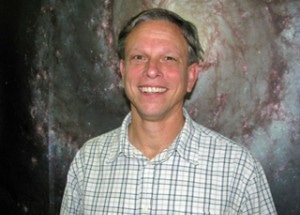Sep 25 2019
A new study indicates that blasts generating gamma-ray bursts may, in fact, exceed the speed of light in surrounding gas clouds, but do so without disobeying Einstein’s theory of relativity.
 Jon Hakkila. (Image credit: College of Charleston)
Jon Hakkila. (Image credit: College of Charleston)
The research performed by Astrophysicists Jon Hakkila from the College of Charleston and Robert Nemiroff from the Michigan Technological University has been published in a recent issue of The Astrophysical Journal.
According to Hakkila and Nemiroff, such superluminal jets could produce the time-reversibility observed in gamma-ray burst light curves. However, these hypothesized jets do not disobey Einstein’s theory of relativity since they only travel faster than light travels through the jet medium, not faster than light through a vacuum.
Hakkila stated that a better way to imagine this superluminal motion is to assume someone on one side of a pond skipping a stone over the water in a specific direction. The stone frequently hops and moves through the air faster than the waves produced by it move through the water.
Waves generated by each skip of the nearing stone can be observed in reverse order, says Hakkila, where waves from the most recent skip arrive first and those from the initial skip arrive last.
According to Hakkila, this explanation for the superluminal blast preserves many properties of accepted gamma-ray burst jet models. However, Nemiroff added that their proposed course of action involves Cherenkov radiation, a kind of light produced by superluminal motion that was not previously considered to be crucial in producing the light curves of gamma-ray bursts.
Standard gamma-ray burst models have neglected time-reversible light curve properties. Superluminal jet motion accounts for these properties while retaining a great many standard model features.
Jon Hakkila, Astrophysicist, College of Charleston